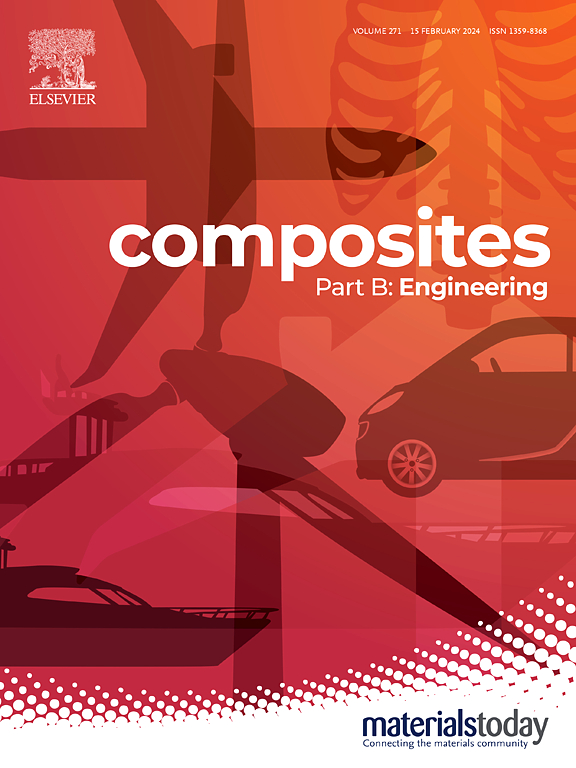Highly conductive surface-localized silver-enriched elastic conductors as a universal platform for skin electronics
IF 12.7
1区 材料科学
Q1 ENGINEERING, MULTIDISCIPLINARY
引用次数: 0
Abstract
Skin electronics will play a pivotal role in the connected healthcare system that can extend healthcare beyond the clinical environment to personalized medicine integrated with patients' daily lives. This paper proposes a complete skin electronic platform (which encompasses three main parts: surface-localized silver-enriched elastic conductors (SSECs)), solderable copper pads and medical dressing. The high-performance SSECs was prepared through gravity induced sediments of silver nanoflakes, which not only exhibit extremely low sheet resistance of 4.8 mΩ/sq (the conductivity is 5.12 × 106 S/m) but also superior stretchability (up to 300 %). The resistance variation of SSECs upon stretching is very small, which can satisfy the application requirements as analog circuit systems. Copper pads embedded in SSECs not only solve the problem of interconnecting with commercial rigid components and integrated circuits but also solve the problem of nagging issue of vulnerable connections between rigid and soft parts. The SSECs can be integrated into a permeable medical dressing by lamination, which is fully compatible and strong adhesion to the skin. As a demonstration, a skin circuit has been fabricated as the platform to integrate a temperature sensor and rigid circuitry to establish a skin temperature sensing system. Accurate temperature measurements can be maintained with only 0.3 % variation even at large wrist bending movements, adequately demonstrated the reliability and practicality of this innovative approach as a potentially universal platform and expected to have a broad application prospect.
作为皮肤电子通用平台的高导电性表面局部富银弹性导体
皮肤电子产品将在互联医疗系统中发挥关键作用,它可以将医疗保健从临床环境扩展到与患者日常生活相结合的个性化医疗。本文提出了一个完整的皮肤电子平台(包括三个主要部分:表面局部富银弹性导体(SSECs)),可焊接铜垫和医用敷料。采用重力诱导沉积法制备了高性能的纳米银片SSECs,不仅具有极低的片阻4.8 mΩ/sq(电导率为5.12 × 106 S/m),而且具有优异的拉伸性(高达300%)。ssec在拉伸时的电阻变化非常小,可以满足模拟电路系统的应用要求。在SSECs中嵌入铜垫片不仅解决了与商用刚性元件和集成电路的互连问题,而且解决了刚性和软件之间脆弱连接的困扰问题。SSECs可以通过层压集成到渗透性医用敷料中,与皮肤完全兼容,附着力强。作为演示,我们制作了一个皮肤电路作为平台,将温度传感器和刚性电路集成在一起,建立了皮肤温度传感系统。即使在大的手腕弯曲运动中,也可以保持精确的温度测量,只有0.3%的变化,充分证明了这种创新方法作为潜在的通用平台的可靠性和实用性,并有望具有广泛的应用前景。
本文章由计算机程序翻译,如有差异,请以英文原文为准。
求助全文
约1分钟内获得全文
求助全文
来源期刊

Composites Part B: Engineering
工程技术-材料科学:复合
CiteScore
24.40
自引率
11.50%
发文量
784
审稿时长
21 days
期刊介绍:
Composites Part B: Engineering is a journal that publishes impactful research of high quality on composite materials. This research is supported by fundamental mechanics and materials science and engineering approaches. The targeted research can cover a wide range of length scales, ranging from nano to micro and meso, and even to the full product and structure level. The journal specifically focuses on engineering applications that involve high performance composites. These applications can range from low volume and high cost to high volume and low cost composite development.
The main goal of the journal is to provide a platform for the prompt publication of original and high quality research. The emphasis is on design, development, modeling, validation, and manufacturing of engineering details and concepts. The journal welcomes both basic research papers and proposals for review articles. Authors are encouraged to address challenges across various application areas. These areas include, but are not limited to, aerospace, automotive, and other surface transportation. The journal also covers energy-related applications, with a focus on renewable energy. Other application areas include infrastructure, off-shore and maritime projects, health care technology, and recreational products.
 求助内容:
求助内容: 应助结果提醒方式:
应助结果提醒方式:


